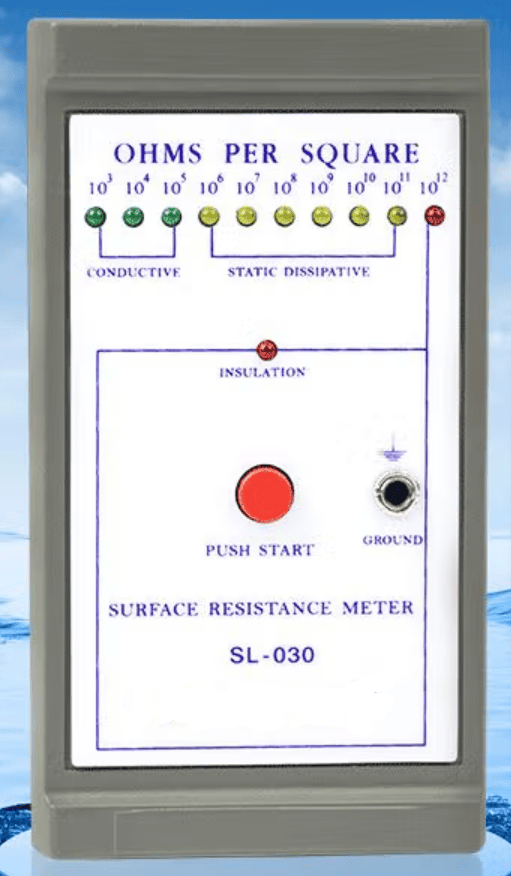
A Surface Resistance Meter is a device used to measure the electrical resistance of a material's surface. It is commonly used in Electrostatic Discharge (ESD) control to evaluate how well a surface can dissipate static electricity.
Determines if a material is conductive, dissipative, or insulative based on its surface resistance.
Ensures compliance with ESD safety standards (e.g., IEC 61340-5-1, ANSI/ESD S20.20).
Helps prevent electrostatic damage to sensitive electronic components in industries like electronics manufacturing, cleanrooms, and aerospace.
The meter applies a known voltage (typically 10V or 100V) across two electrodes placed on the surface.
It then measures the resistance in ohms (Ω) and categorizes the material:
Conductive: – Ω
Dissipative: – Ω
Insulative: Ω or higher
Delivery is prompt!
By 10-year industry experts!
Diverse payment methods available!
Unbeatable cost performance!